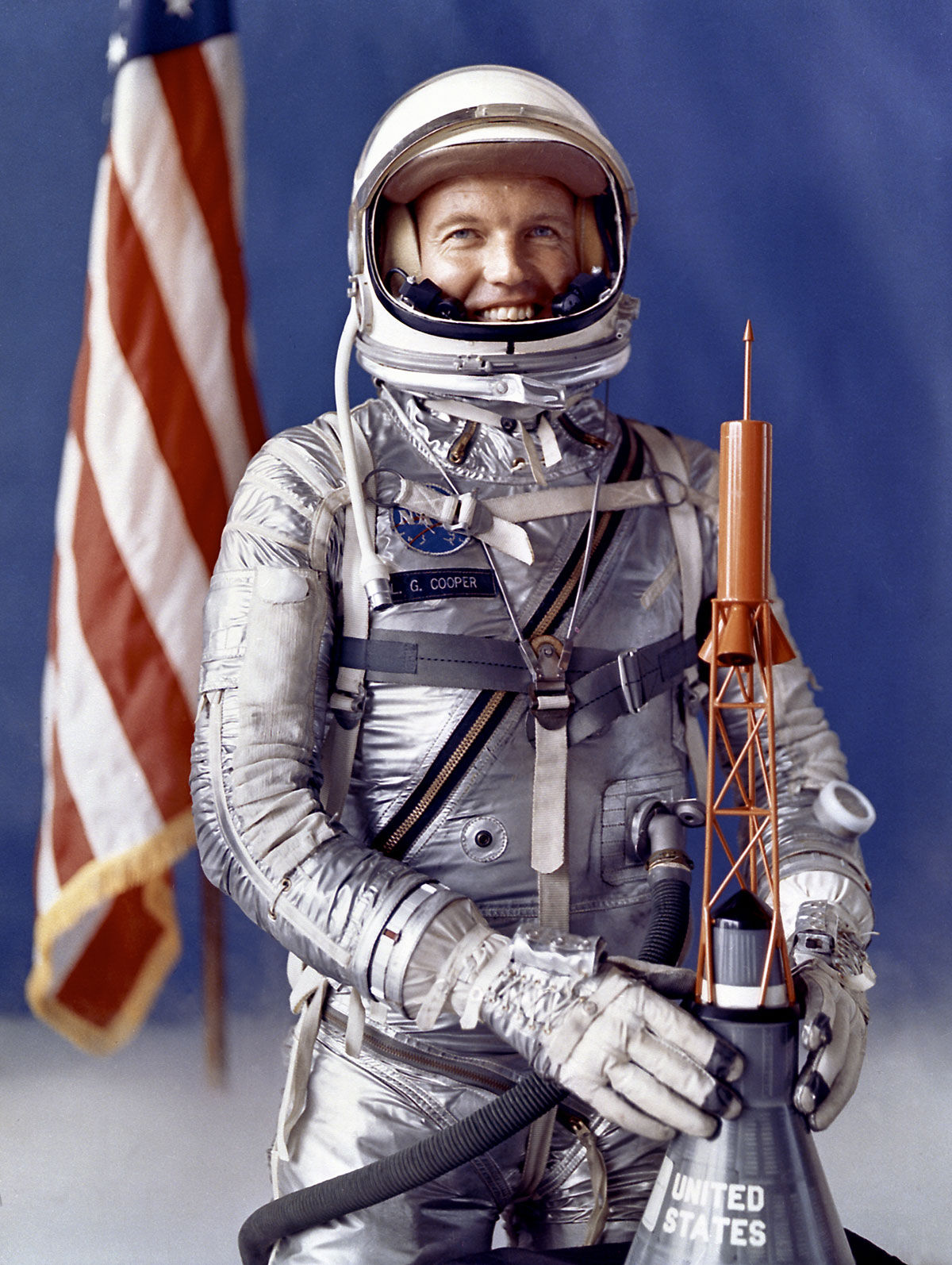
In addition to the article
"Astronauts that are much cooler than any hero of an action movie" and about
one of its participants, I would like to tell you about one of them:
Leroy Gordon Cooper who got the dubious joy of the first in the world to experience a manual landing of a spacecraft, with which he must have done it perfectly well: his landing 1.8 km from the given point turned out to be the most accurate for the Mercury program and one of the most accurate in the entire history (for example, for the Soyuz automatic landing system, deviations of
up to 15 km are now allowed, at ie the time deviation reaches
50-60 km ). This and his second flight, as well as the vicissitudes of his fate, will be discussed today.
Gordon Cooper was born in 1927 and fell in love with airplanes at an early age when, at the age of 5, his father (army colonel) took him on a biplane flight. He decided to follow in the footsteps of his father and also entered military service. He did not have time to end the Second World War, so initially he was sent to a 3-year course at the University of Hawaii, after which he spent 4 years in the Federal Republic of Germany flying F-84 and F-86 fighters. After returning to the United States, he in 1957 managed to obtain a degree in aeronautical engineering at the University of Ohio, after which he was appointed aviation engineer and test pilot at the Edwards airbase. At the same time, NASA announced the first set of astronauts, an application in which Cooper also filed. He himself recalled this moment:
I always had as I think the natural desire of most pilots to fly a little higher and faster.
Among those enrolled in the ranks of the
"first seven" of the 500 applications of US military pilots with his age of 32 years, he was the youngest and most inexperienced of the selected pilots. His acquaintance with NASA personnel began at the local airport when he
suggested the passenger flying with him to take a ride on his new Corvette, delivered to the airport, to Cape Canaveral, to which he agreed. The trip began with a 180-degree turn with smoke from under the wheels and continued on the highway at a speed of 130 km / h, after all this, he turned to the passenger and said: "Hi, I'm Gordon Cooper." The passenger who traveled with him was
Gene Krantz , who later became the lead flight leader best known for his phrase
“Failing is Inadmissible”, spoken by him shortly after the
Apollo 13 accident.
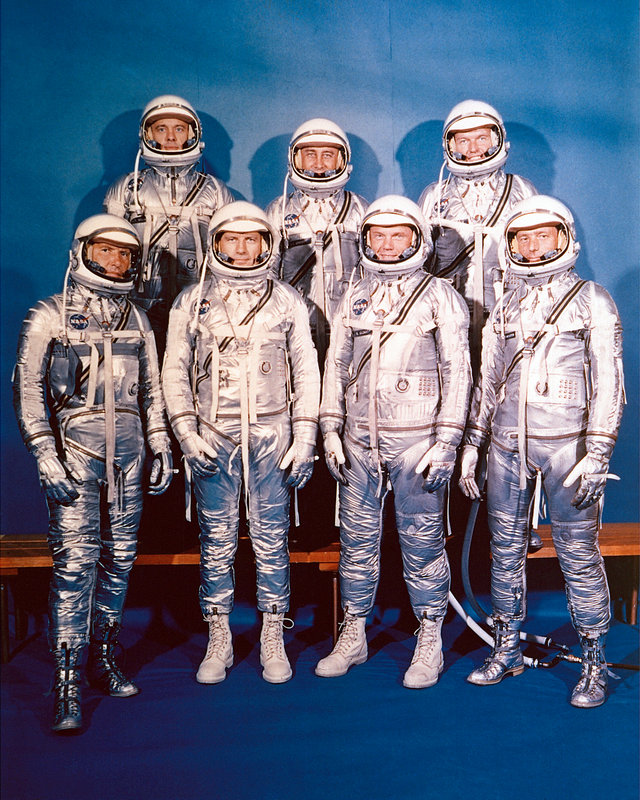 Cooper upper right
Cooper upper rightBecause of his small experience, he became the penultimate of the first seven who got into space (and then only because of the problems of
Donald Slayton with his heart that prevented him from flying for a long time): he was appointed the main pilot of the mission
Mercury-Atlas-9 in November 1962,
Alan Shepard was appointed as a backup. Accidents and technical problems with different versions of the Atlas rocket from
the Konver company greatly slowed down the preparation of the mission, and some time, at NASA’s request, it took 4 capsules for longer flights: the company had to make 183 modifications, including removal from periscope ship (weighing 34.5 kg), spare telemetry transmitters and voice communications. In return, oxygen, water, food, and extra batteries were added. But in the end, all the problems were resolved, including the installation of more powerful shunting engines on the rocket, in order to eliminate the dangerous lurch that occurred during the last launch of
Walter Schirra . In addition to delays in the preparation, the NASA leadership was also not very pleased with Cooper's desire to name his Vera-7 capsule.
Some, not without reason, considered Gordon Cooper reckless and risky and offered to fly instead of Alan Shepard for the second time. These conversations almost became a
reality when, just 2 days before his start, Cooper flew to the F-106 dangerously close to the administrative buildings of NASA (just like the main character of the film
“Best Shooter” - witnesses stated that the plane was below the windows of the second floor) . In the end, after thinking, who had occupied the day, it was decided to admit it, nevertheless, before the start.
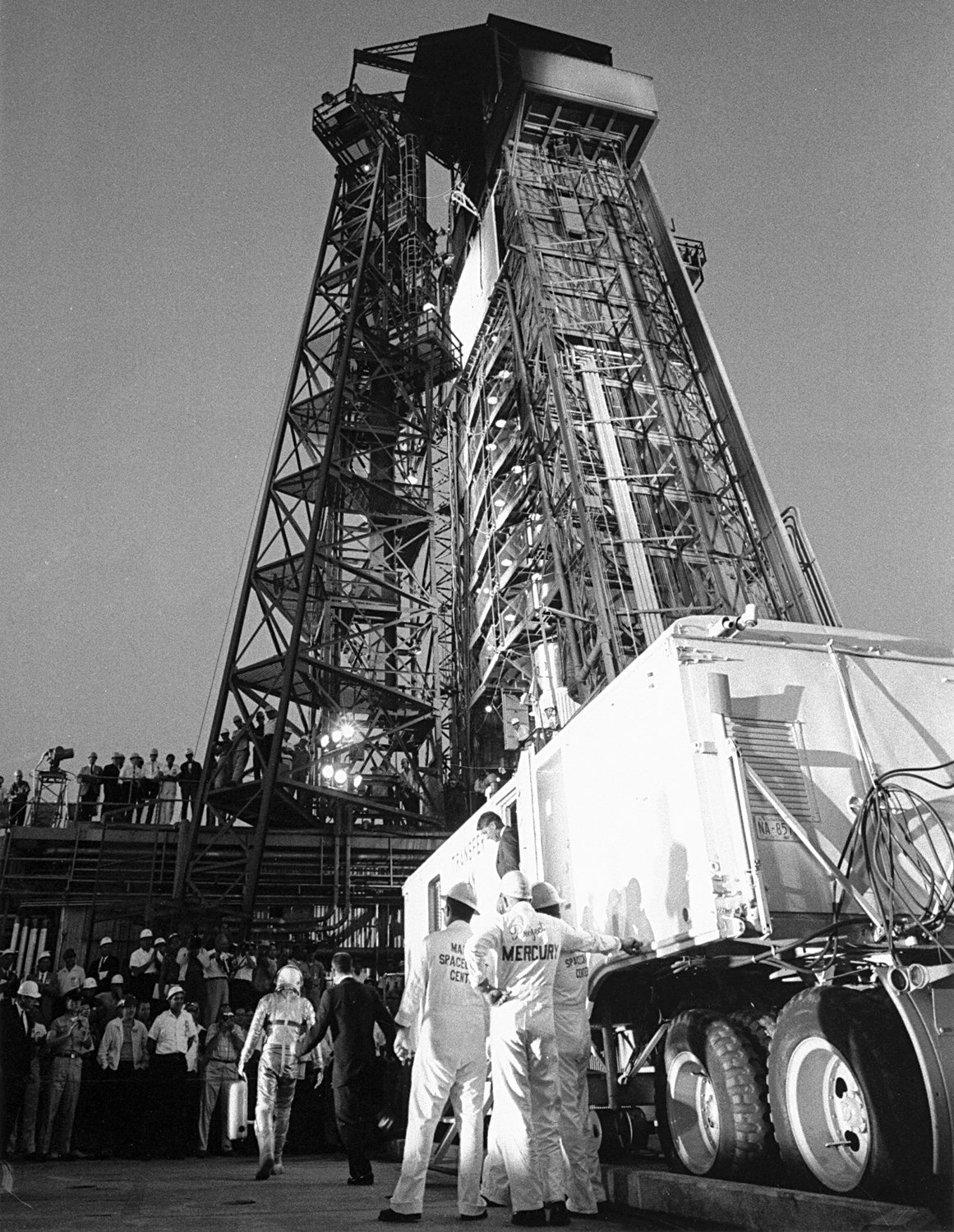
Climbing into the capsule on May 15 at 6:36 am local time, he found on the chair a device for collecting urine (which was first used in this flight) signed by Shepard with the phrase "Remove before flight." In preparation for the launch, the radar was out of order in the reserve control center in Bermuda, which, however, did not prevent the countdown from continuing, unlike the diesel engine that refused to start, intended to divert the service platform from the rocket. It took 2 hours to clean the clogged injector pump, after which the platform was deflected, but the launch still had to be canceled due to the failure of the computer in Bermuda this time. Despite the 6 hours he spent lying out of the capsule, Gordon even managed to joke:
“I just got to the most interesting part. This is a very realistic simulation ”: he said.
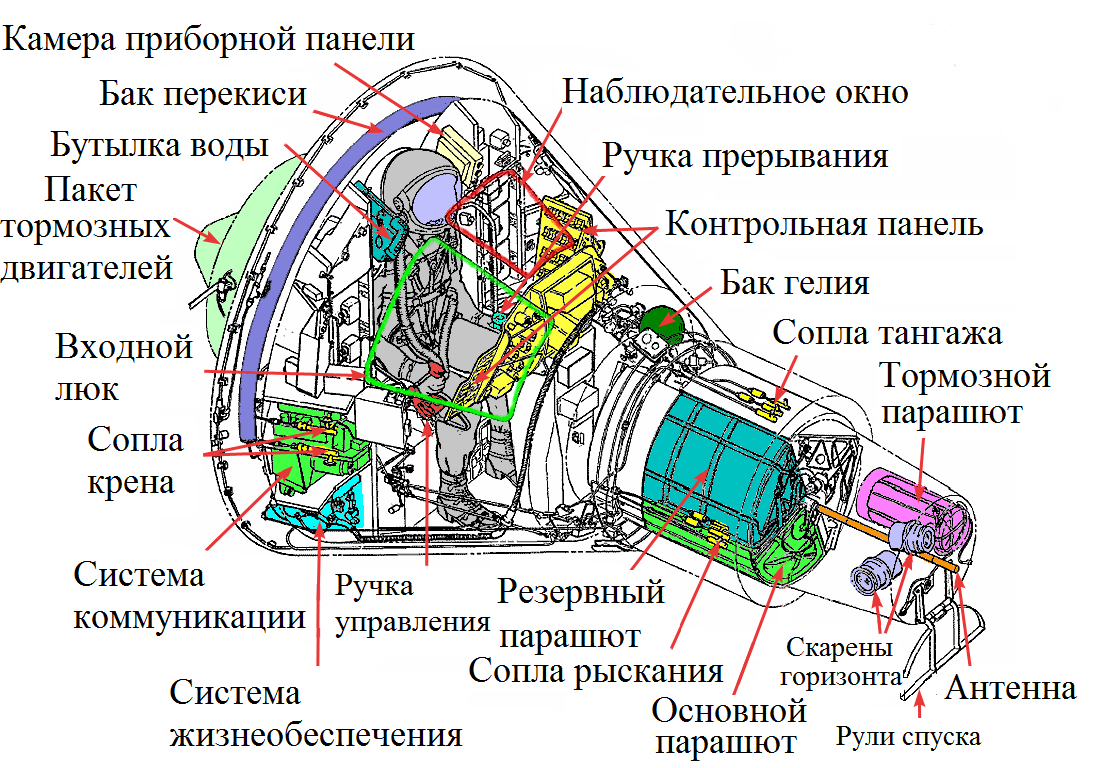 "Mercury" did not differ spaciousness. What was not surprising, because due to the lack of powerful missiles from the United States at that moment, the entire capsule weighed only 1350 kg - only 23 kg more than Satellite-3 .
"Mercury" did not differ spaciousness. What was not surprising, because due to the lack of powerful missiles from the United States at that moment, the entire capsule weighed only 1350 kg - only 23 kg more than Satellite-3 .He spent the rest of the day fishing. Despite a slight delay due to the Atlas targeting system, on the whole, on May 15, the countdown went absolutely smoothly, so smoothly that Cooper managed to fall asleep during it, so Walter Schierre needed some effort to wake him up by radio. Then, 19 seconds before launch, the countdown again had to be paused for a short time so that the launch team could once again check the correctness of the rocket operation. The launch took place at 16:04 Moscow time and was almost perfect: only the inclination of the orbit deviated from the given parameters by 0.0002 degrees. Overload at start-up reached 7g, but Cooper described the start only as “a smooth but clear push”.
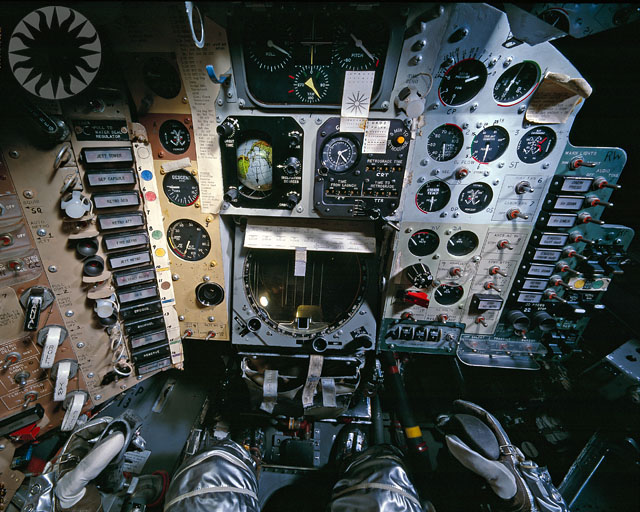 The interior of the cabin "Mercury"
The interior of the cabin "Mercury"In total, Gordon Cooper had to perform 11 experiments, among which was the release of a 15-centimeter ball with a xenon stroboscope, which he was supposed to watch (it only happened to watch after the ship left for the Earth’s shadow), the release of a 76-centimeter ball that was supposed to puff up with nitrogen so that you can evaluate its influence on the change in the orbit of the ship (for 2 attempts to unhook it, it was not possible, as well as to establish the reason for this later).
Cooper so economically spent his supply of oxygen that Shepard jokingly asked him in the negotiations:
"stop breathing .
" To which Cooper replied that since he is the only one of the first seven, he is not a smoker, his lungs work better than all the others. In addition, the fuel capsule was also economically consumed, from which he subsequently received the nickname
“Skryaga” from the ground crew. Having slept from 10th to 13th round and having lunch, he checked the reserves of fuel and oxygen on the 14th round and received permission from the ground crew to extend the mission from 17 turns to 22. In general, when eating, Cooper had problems with adding water to the sublimated bag. food, and the other package, he did not open at all, noticing crumbs in it. So at the end of the flight, he lost as much as 3 kg of weight. During the 17th orbit, for the first time for the Mercury program, he transmitted to the Earth a television image of rather poor quality:
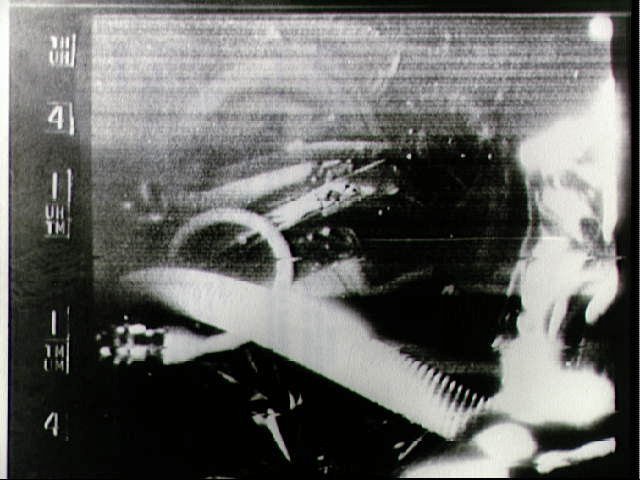
In addition, during the entire mission, he took many pictures of the earth
limb and the earth's surface, like this picture of mountains in the Himalayas:
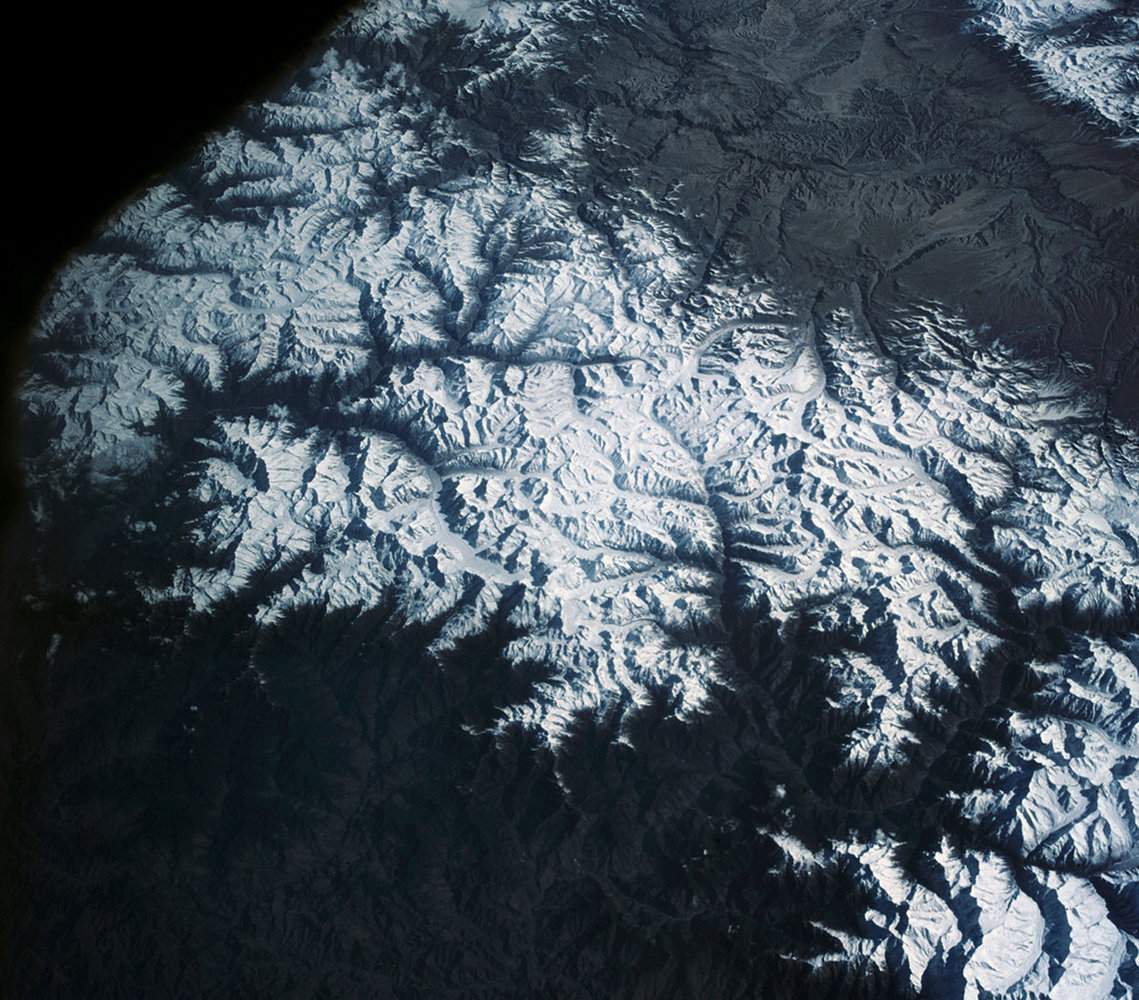
To everyone's surprise, he stated that in the course of the flight he could distinguish separate roads and buildings with the naked eye. The first problems began to appear on the 19th turn, when the lamp was lit, indicating the appearance of overloads, but at that moment it was considered a malfunction of the lamp itself. On the 20th orbit, Gordon lost the system showing the orientation of the ship, and on the 21st, the entire automatic control system failed due to a short circuit in the central 250-volt bus that fed it. Despite the fact that only the radio remained in the cockpit, and the carbon dioxide level began to rise gradually, Cooper remained calm and collected, and in the negotiations described the situation simply as
"Events start to pile up a little .
"To land, he had to draw lines corresponding to the constellations on the observation window and orienting the ship backwards at an angle of 34 ° relative to its orbital motion, after which the engines were turned on for exactly the time allotted for this. Even a simple delay per second with the engines turned on at a speed of 7844 m / s meant a corresponding miss at the landing point, which would lead to delays in searching for a capsule or even more serious consequences, since the capsule had a very limited time to maintain tightness.
John Glenn helped him determine the exact moment to turn on the engine from Earth, and to establish the exact moment to turn off the engines he used his wristwatch.
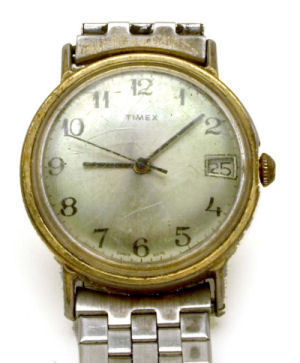
The capsule landed in the Pacific Ocean on May 16, 1963 at 2:24 Moscow time (May 15 at 23:24 UTC) 6 km from the
Kearsarge aircraft carrier 15 minutes after the end of the braking impulse, and another 25 minutes later the capsule was delivered with Cooper by helicopter on this aircraft carrier. He spent a total of 32 hours and 20 minutes in space.

According to the plans, this mission was supposed to be the penultimate in the Mercury program, but even before Gordon Cooper was launched into space, there was debate that this program had exhausted itself (partly because the USSR had flown almost half a year before duration) and it is worth moving quickly to the new program “Gemini”. As a result, the accident put an end to these disputes.
The film is dedicated to the mission Mercury-Atlas-9, which shows the preparation for the flight, the arrangement of the cabin, space food and the course of the mission.Cooper also participated in the programs “Gemini” and “Apollo”, flew into space one more time as commander of the crew of
Gemini-5 and became that very first astronaut who flew into space again. In this flight, he and
Charles Conrad set the world record for the duration of the flight: he took 190 hours and 56 minutes from them. Also in this flight, he was pursued by problems with the electrician - this time the fuel cells turned out to be faulty. However, this time the problems were not so serious, and they were able to accomplish their task of releasing the target, tracking it with a radar and simulating docking with photographing it, which was necessary for working out future Apollo missions impossible without the docking of the Command and Lunar modules.

Mission logo
He was also assigned to the reserve crew of Gemini-12 and Apollo-10, and was already appointed commander of Apollo-13, but due to Alan Shepard’s return to the flights, he was already appointed as commander of the crew (although Shepard was later transferred to Apollo- 14). Delays in the appointment of Cooper in the flight to the moon led to the fact that he resigned from NASA on July 31, 1970, and later accused Alan Shepard and Donald Slayton that they used their power in the appointment of astronauts and the not honest mechanism of rotation of the Apollo astronauts ”, To which his colleagues opposed that since the days of“ Gemini ”he began to lose interest in training, and in 1969 he participated in the
“ 24 hours Daytona ” race in parallel with training as part of the Apollo-10 backup crew Alan Shepard, Walter Schirra and
Thomas Stafford also participated with him in the
Indy 500 , but did not participate in races during training).
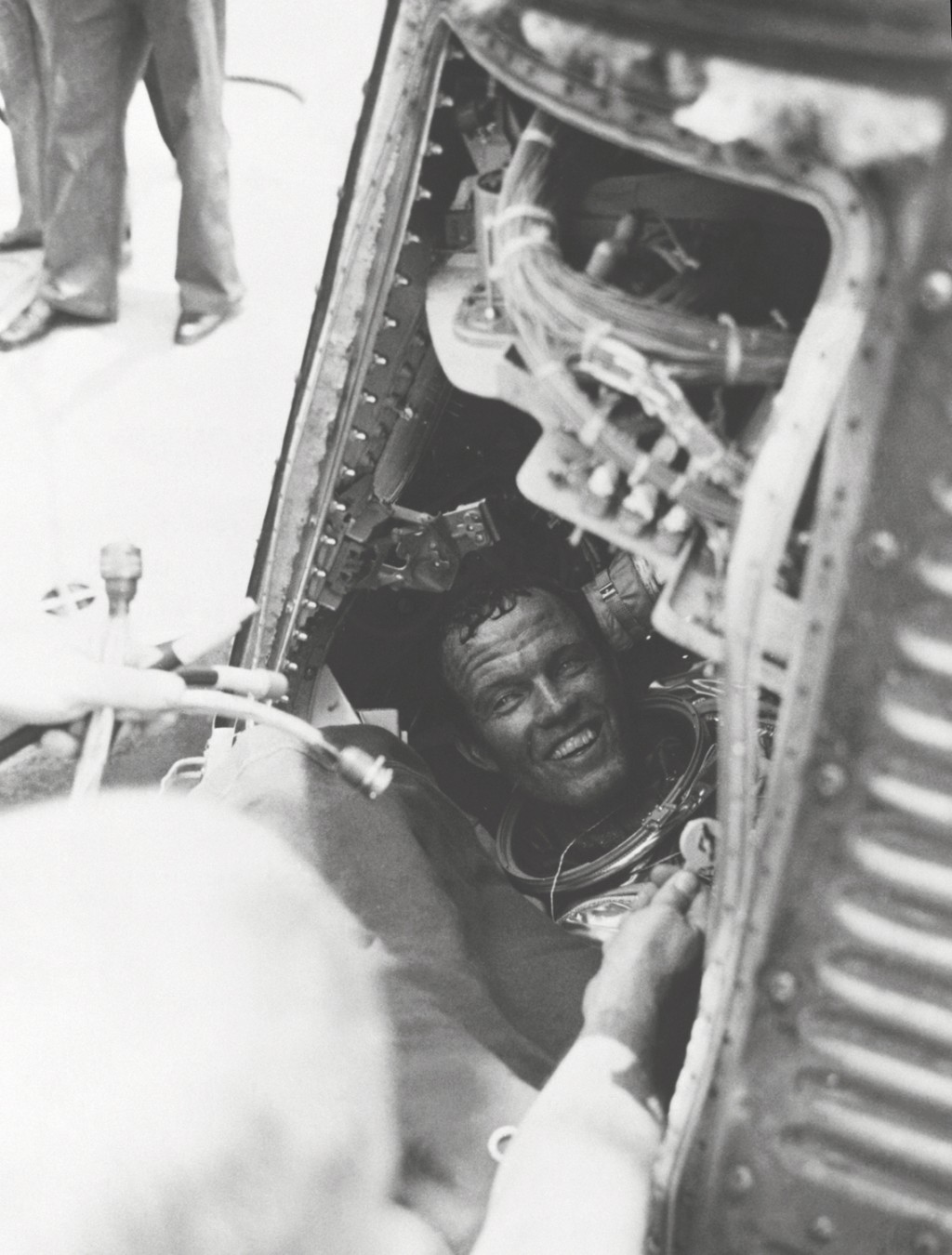
After retiring from NASA, he created his own consulting firm, acted as a director in
several companies producing modular homes, and even worked as a consultant in a firm that developed vehicles with vertical takeoff and landing. His hobbies include archeology, racing, flying, skiing and boating, hunting and fishing. But more in recent years, Cooper was remembered by the fact that he defended the point that the US government is hiding traces of aliens on Earth, and he himself said that he had observed a UFO during his flights during the times when he was a military pilot. He also
claimed that the Pentagon seized pictures taken by him during the Gemini-5 mission of the famous
"Zone-51" , although the pictures were later discovered and turned out to be of too poor quality, and Gemini-5 did not fly near Zone-51. Cooper died on October 4, 2004 at the age of 77.
Related Links:Arrangement of various “Merkuriyev” cabsSome more schemes of the shipGame dedicated to the manual landing of the capsule "Mercury"